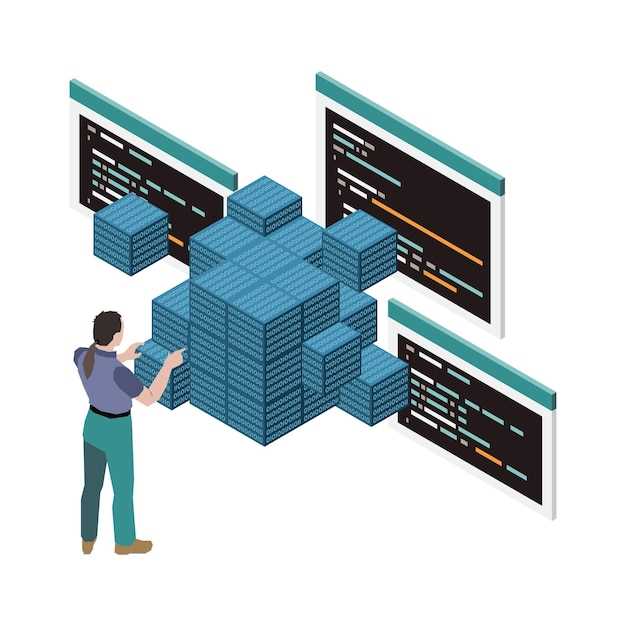

In an era where data drives innovation and informed decision-making, the concept of data acquisition has gained immense popularity among hobbyists and engineers alike. Creating a DIY data acquisition system at home enables you to log data from various sensor types, be it temperature, humidity, or even light levels. This not only enhances your understanding of the environment around you but also empowers you to develop projects that can have practical applications.
The process of building your own data acquisition system offers a hands-on experience that cultivates essential skills in programming, electronics, and data analysis. With the right components and a clear plan, you can set up a reliable logging system tailored to your unique needs. By integrating multiple sensors, you can gather diverse datasets, allowing for comprehensive analysis and insights.
As you embark on this exciting DIY adventure, you’ll discover the joy of configuring hardware, writing scripts for data processing, and visualizing the results. This article will guide you through the core concepts and practical steps necessary to develop a data acquisition system that not only meets your requirements but also fuels your passion for learning and experimentation.
Selecting the Right Sensors and Components for Your Telemetry Project

When embarking on a diy telemetry project, the selection of sensors and components is crucial. This decision will determine the accuracy, reliability, and efficiency of your data logging system. Understanding the specific requirements of your project will guide you in making informed choices.
Sensors play a pivotal role in data acquisition systems. Depending on the parameters you wish to measure–such as temperature, humidity, pressure, or motion–you will need to choose appropriate sensors. For instance, if temperature monitoring is your goal, consider using thermocouples or thermistors, as they are widely used for their accuracy and response times.
Another aspect to consider is the range of measurements your sensors can take. Ensure that the sensors you choose can cover the expected ranges for your project without saturating or underperforming. For example, a low-range pressure sensor may not be suitable for high-pressure applications, while a high-range sensor could be overkill for low-pressure environments.
In addition to the type of sensor, pay attention to the output type. Sensors can provide analog or digital signals, and it’s vital to ensure compatibility with your data acquisition system. If you are using a microcontroller, verify that it can handle the sensor’s output voltage levels and protocols.
Furthermore, think about the power requirements of your components. Some sensors might require more power, which could complicate your system. Opt for low-power sensors if you plan to run your system on battery or solar power, ensuring longevity and efficiency.
Consider the environment where your telemetry system will be deployed. If your sensors are exposed to harsh conditions such as extreme temperatures or humidity, look for models that are specifically designed for durability and environmental resistance.
Lastly, always review user feedback and product documentation. Reading real-world experiences can provide insights into the performance and reliability of different sensors and components. This information can be invaluable in guiding your choices and ensuring that your telemetry project achieves its goals effectively.
Setting Up Data Logging Software and Hardware Integration

Integrating data logging software with hardware is a crucial step in building an effective DIY data acquisition system. This process involves selecting compatible components, configuring software settings, and ensuring seamless communication between hardware and software.
First, identify the hardware components you will use for telemetry. Common sensors include temperature, humidity, and pressure sensors, which can be connected to a microcontroller board such as an Arduino or Raspberry Pi. Ensure that your selected microcontroller has the appropriate ports and communication protocols (like I2C, SPI, or UART) to interface with your sensors.
Once the hardware setup is ready, the next step is to choose a suitable data logging software package. There are many options available, ranging from open-source solutions to commercial products. Popular platforms like Node-RED or Grafana can serve as powerful logging tools, allowing for real-time telemetry visualization. Select software that supports your chosen microcontroller and offers convenient features such as remote access and data export capabilities.
After selecting the software, configure it to recognize your sensors. Begin by writing or modifying the code that reads data from the sensors. For Arduino, you can use the Arduino IDE to upload sketch files that specify how the data should be collected and transmitted. Ensure that the data types and formats are compatible with your logging software.
Next, establish a communication channel between your microcontroller and the logging software. This can typically be done via USB or a wireless interface, depending on your system design. Verify that all the necessary drivers are installed on your computer to facilitate the connection.
Once hardware and software are integrated, it’s time to test the system. Start with simple logging tasks, ensuring that data is being collected accurately. Monitor for any discrepancies in data readings, which may indicate improper calibration or coding errors. Utilize debugging tools available in your software to identify and rectify any issues that may arise during this phase.
Finally, implement data storage solutions to archive your collected telemetry data. Depending on your requirements, you may opt for local storage on your computer or cloud solutions for backup and accessibility. Make sure to design your data logging system to handle long-term data retention and facilitate easy retrieval.
Analyzing and Visualizing Sensor Data for Practical Applications
Building your own data acquisition system at home allows for extensive experimentation with different sensors. However, collecting data is only the first step. Analyzing and visualizing this data is crucial for deriving insights and enabling practical applications. The process involves several key components, including data logging, exploratory data analysis, and visualization techniques.
Data logging is essential in a DIY setup. Sensors continuously generate readings that need to be collected and stored for analysis. This can be accomplished using microcontrollers like Arduino or Raspberry Pi, which offer various libraries and tools for effective data logging. Data is typically stored in formats like CSV or JSON, allowing for easy retrieval and manipulation.
Once data is logged, the next step is exploration and analysis. This involves cleaning the data to remove any anomalies or noise that may exist due to sensor inaccuracies. Tools such as Python with libraries like Pandas or NumPy can be utilized for these tasks. Statistical techniques can also be applied to derive meaningful metrics, such as averages, variances, or trends over time. Identifying these patterns helps in understanding the behavior of the environment being monitored.
Visualization is a powerful tool for interpreting data. Graphs and charts can convert complex numerical datasets into digestible visuals. Libraries such as Matplotlib or Seaborn in Python enable users to create plots like time series graphs, scatter plots, or heatmaps. These visualizations not only make it easier to comprehend results but also facilitate communication of findings to others.
Practical applications of analyzed sensor data are vast. For instance, temperature and humidity data logged from a home environment can help in optimizing heating and cooling systems, thereby improving energy efficiency. Similarly, air quality sensors can provide insights into pollution levels, helping to inform daily decisions regarding outdoor activities.
In summary, to fully leverage the capabilities of your DIY data acquisition system, focus on effective data logging, thorough analysis, and clear visualization. This structured approach will enhance your understanding of the sensor data and allow you to apply it in meaningful, real-world contexts.







